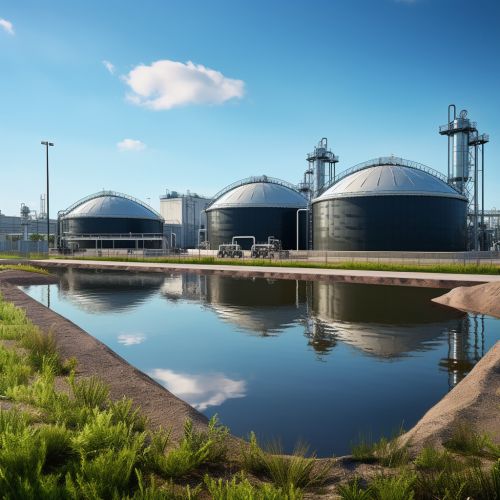Sewage treatment
Introduction
Sewage treatment is a process that involves the removal of contaminants from wastewater, primarily from household sewage. The process involves physical, chemical, and biological methods to remove these contaminants and produce environmentally safe treated wastewater (or treated effluent). A by-product of sewage treatment is usually a semi-solid waste or slurry, called sewage sludge.
History
The concept of sewage treatment dates back to ancient times. In many ancient civilizations, such as the Indus Valley Civilization, settlements were built with advanced water supply systems and wastewater removal methods. However, the modern sewage treatment process as we know it today began to take shape in the late 19th and early 20th centuries.
Types of Sewage Treatment
There are three main stages of sewage treatment: primary, secondary, and tertiary (or advanced).
Primary Treatment
The primary treatment involves the removal of large and small particles from the sewage. This is achieved through the use of screens and sedimentation tanks. The primary treatment removes about 60% of suspended solids from the sewage.
Secondary Treatment
The secondary treatment involves the use of biological processes to remove dissolved organic matter from sewage. Microorganisms consume the organic matter as food, converting it into carbon dioxide, water, and energy for their own growth and reproduction. The secondary treatment removes up to 90% of the organic matter in sewage by making it available as food for microorganisms.
Tertiary Treatment
Tertiary treatment, also known as advanced treatment, is the final cleaning process that improves wastewater quality before it is reused, recycled or discharged to the environment. The tertiary treatment removes remaining inorganic compounds, bacteria, viruses, and parasites. This stage is often referred to as the "polishing" stage.
Sewage Treatment Processes
Sewage treatment involves several processes, including preliminary treatment, primary treatment, secondary treatment, and sludge treatment.
Preliminary Treatment
Preliminary treatment is the first stage of the sewage treatment process. It involves the removal of large objects from the incoming sewage. This is achieved through the use of screens, grit chambers, and skimming tanks.
Primary Treatment
In the primary treatment stage, the sewage is held in a quiescent basin where heavy solids can settle to the bottom while oil, grease and lighter solids float to the surface. The settled and floating materials are removed and the remaining liquid may be discharged or subjected to secondary treatment.
Secondary Treatment
Secondary treatment is designed to substantially degrade the biological content of the sewage derived from human waste, food waste, soaps and detergent. The majority of municipal plants treat the settled sewage liquor using aerobic biological processes.
Sludge Treatment
The sludge that is produced in large quantities during sewage treatment, or the settled solids, are treated separately from the liquid fraction of the sewage. The treatment of sludge may include a combination of thickening, digestion, and dewatering processes.
Environmental Impact
Sewage treatment has a significant impact on the environment. On one hand, it helps to prevent the pollution of water bodies and protects public health by reducing waterborne diseases. On the other hand, the process produces large amounts of sludge that need to be disposed of in an environmentally friendly manner. Moreover, sewage treatment plants consume large amounts of energy and contribute to greenhouse gas emissions.
Future Trends
The future of sewage treatment lies in the development of more efficient and sustainable technologies. This includes the use of renewable energy sources, the recovery of resources from sewage, and the development of decentralized sewage treatment systems.
See Also


